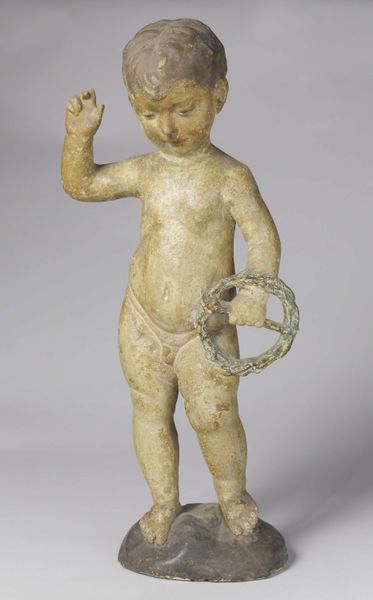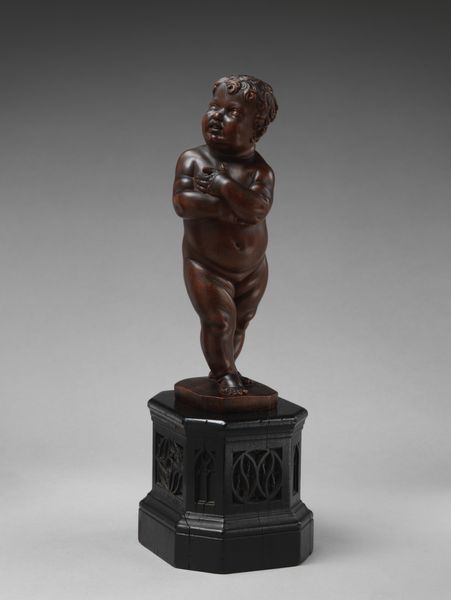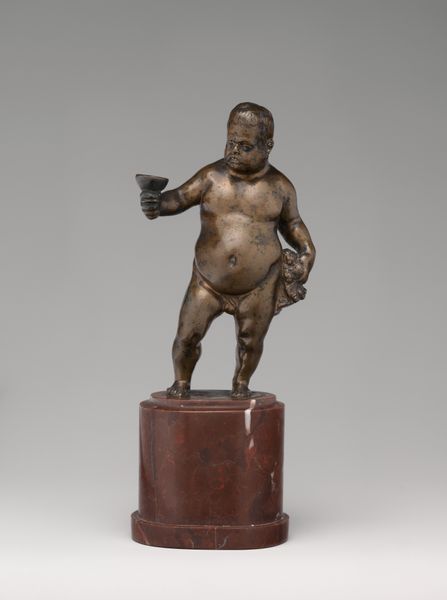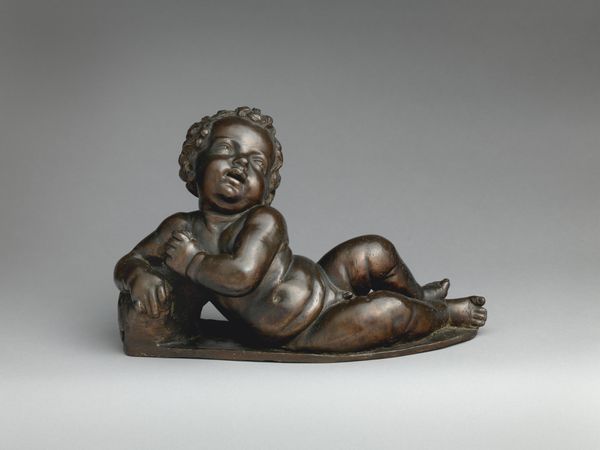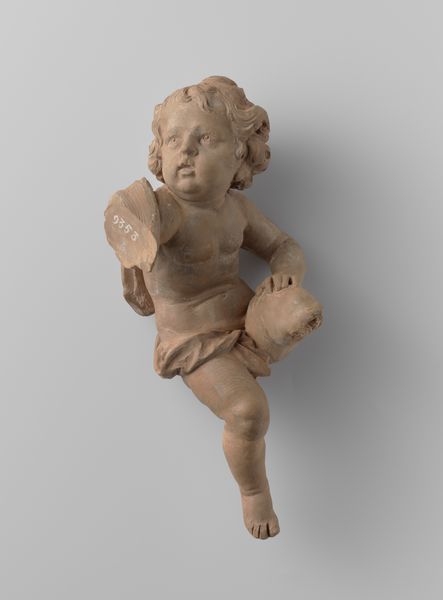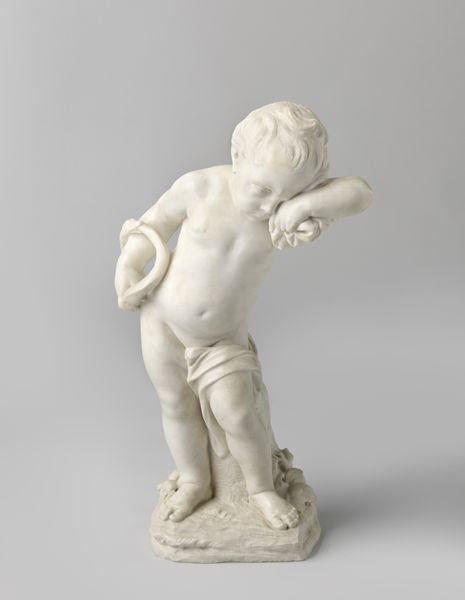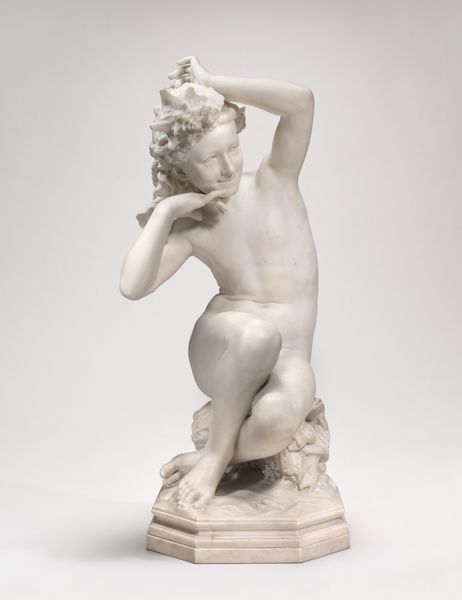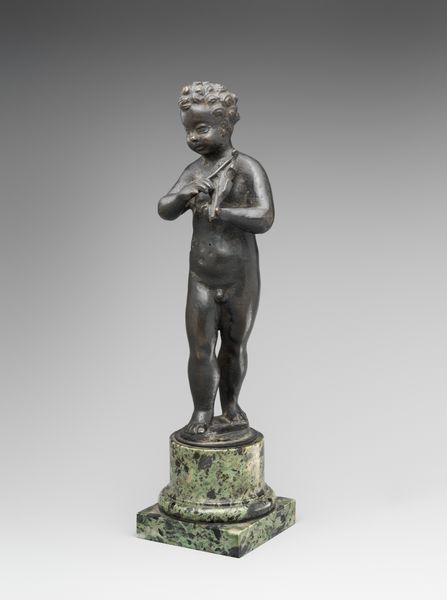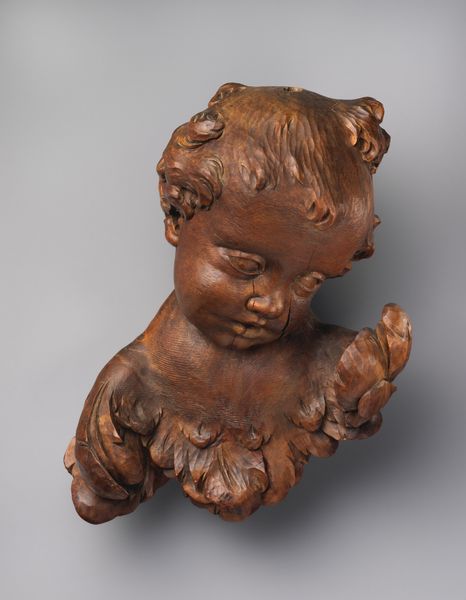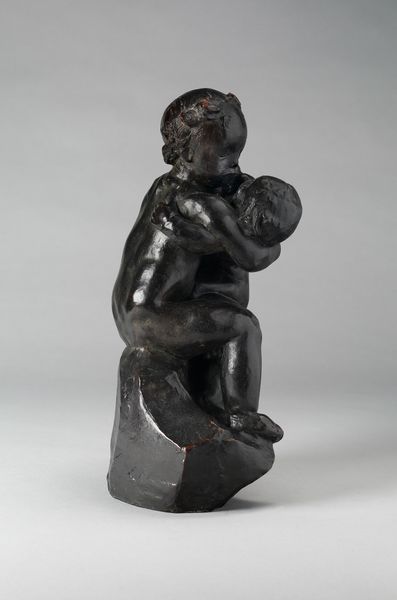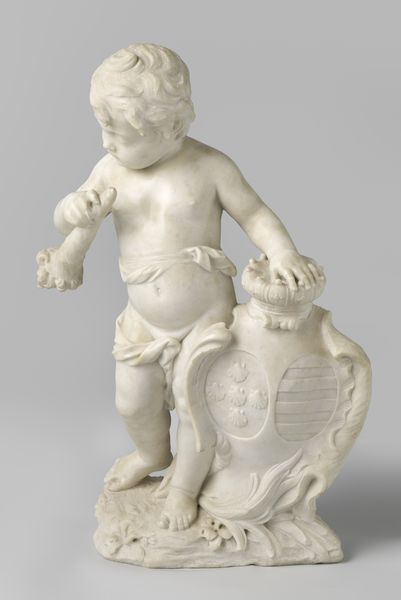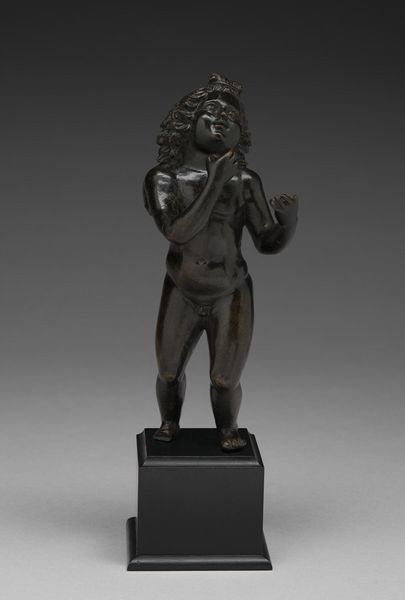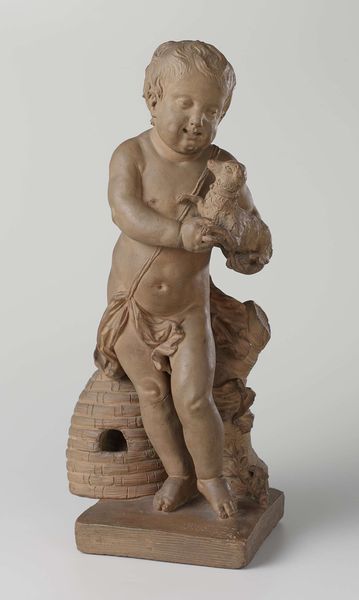
bronze, sculpture, marble
#
portrait
#
statue
#
bronze
#
figuration
#
11_renaissance
#
sculpture
#
history-painting
#
marble
#
italian-renaissance
#
nude
Dimensions: overall: 75 x 38.3 x 23 cm (29 1/2 x 15 1/16 x 9 1/16 in.)
Copyright: National Gallery of Art: CC0 1.0
Curator: Look at this "Putto Poised on a Globe," circa 1480, attributed to Andrea del Verrocchio. It's quite a charming piece, wouldn't you agree? The medium appears to be bronze, although some sources mention marble as well. Editor: It’s lovely, certainly, but what strikes me first is the assertion of dominance in this young child's posture. One hand raised as if in triumph, perched precariously on top of the world… it evokes a very particular Renaissance understanding of power and its relationship to youth and masculinity. Curator: That’s an interesting perspective. From my standpoint, focusing on the materials, bronze, and possibly marble, is crucial. Think of the labor, the mining, the crafting, the casting process needed to bring this to life. Who was involved? The networks of skilled artisans? And where did Verrocchio source these materials? This wasn't a solo endeavor; it reflects a whole system of production. Editor: Absolutely, and this system, this production, served a specific ideology. We see it re-enforcing narratives of European supremacy already nascent at that moment in history. How does this putto reflect ideas about childhood, too? Consider gender roles, emerging colonial power, all solidified and naturalized through the artistic choices in a statue like this one. Curator: That ties into the context surrounding Verrocchio. He wasn’t just an artist; he ran a workshop, and that workshop dynamic influenced his creations. It brings into focus what high art actually consisted of: patronage, workshops, the exploitation of labor and of natural resources, not solely individual genius, as commonly believed. Editor: Agreed. Thinking intersectionally, it is useful to deconstruct and unpack precisely those values of individual genius or, dare I say, Western so-called mastery which art history has traditionally perpetuated by obscuring less glorified, and usually underpaid and exploited roles within a context of making and its patronage. Curator: Right. Considering this as an art object brings forward how we, today, engage with the production and consumption of art. Editor: Ultimately, examining art with a broader social awareness opens space for more inclusive discussions. Curator: Precisely. This piece reminds us how deeply embedded economic structures are into the creative process. Editor: And of how powerfully art can contribute to broader power dynamics, which still resonate today.
Comments
No comments
Be the first to comment and join the conversation on the ultimate creative platform.
